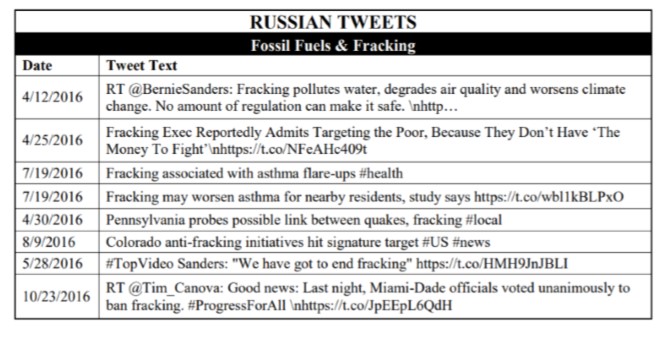Oh, there’s Russian interference in the United States alright, but it wasn’t on behalf of President Donald Trump (nice try, lefties). It was on behalf of Russia’s oil and natural gas industry. A recent report by the U.S. House of Representatives Committee on Science, Space, and Technology found that Russia attempted to influence U.S. domestic energy markets by exploiting social media, but received little fanfare, especially here in Colorado.
Here are the key findings in the report:
- From 2015 to 2017, approximately 9,097 Russian posts or tweets emerged regarding U.S. energy policy or a current energy event on Twitter, Facebook, and Instagram. These came from an approximate 4,334 accounts linked to the Internet Research Agency, established by the Russian government.
- Russia took advantage of American social media as part of its concerted effort to disrupt U.S. energy markets and sway domestic energy policy.
- Key topics included pipelines, fossil fuels, climate change, and other issues meant to divide sentiment around U.S. energy policy.
And why does Russia care? The United States’ emergence as a global exporter of oil and, particularly, natural gas threatens Russia’s oil and natural gas industry. Even Russia admits the United States’ exports are problematic. A Reuters article from January 2017 notes:
“Russia’s Gazprom [government-run oil and gas company] has acknowledged for the first time a threat to its dominant position in European gas market from an expected influx of liquefied natural gas (LNG) produced in the United States under [the Trump] administration.”
The report also notes that the Kremlin, in order to disrupt the United States’ forward march to energy dominance, “is attempting to make ‘useful idiots’ of unwitting environmental groups and activists in furtherance of its energy operations.”
This Kremlin-led strategy has real implications here in Colorado. In fact, a Russian bot tweet about Colorado’s anti-fracking ballot initiatives was used in an example. See the 8/9/2016 example.

The news that this tweet is referring to is that two anti-fracking ballot initiatives had collected enough signatures (so they thought) to get on the ballot. One of the initiatives would require that oil and gas development facilities be 2,500 feet from occupied structures and areas of interest, which sounds almost identical to initiative 97 going through the ballot initiative process right now. The second ballot initiative would give local governments the ability to regulate oil and gas development, which flies in the face of current constitutional authority and is basically every environmentalists’ dream.
The question is whether these groups knowingly do the bidding of the Kremlin. Later this week, we will take a look at some of the groups across the country and in Colorado and how they are funded.
